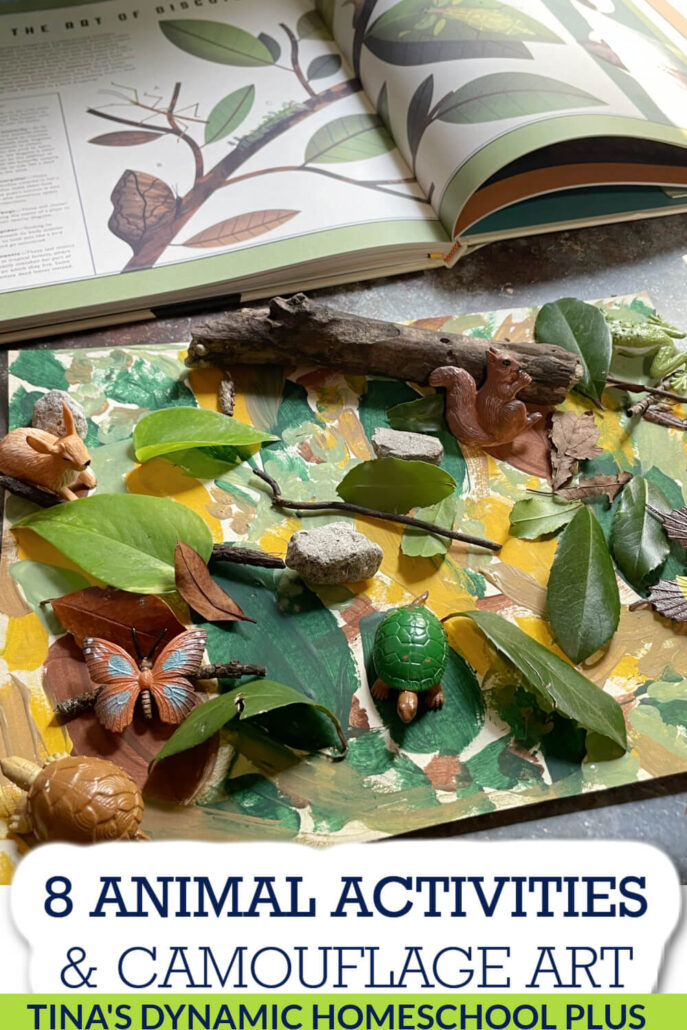
July 19, 2023 | Leave a Comment
This post may contain affiliate links. For more information, please see my full disclosure policy.
Hands-on animal camouflage activities are the best way to teach young learners how and why many animals have that adaptation. Also, you’ll love my post Easy Hands-on Science: Animal Camouflage Activity Hunt.
There are several ways and reasons that animals use camouflage.
One important thing to explain to your child is that camouflage is not only used by prey for protection, but it is also helpful for predators to be able to sneak up on their food.

Animals use their shapes, colors, and patterns, as well as the lighting and landscape around them to conceal themselves in the woods, savannah, arctic, and every other biome.
If you are looking for animal camouflage activities to do with your child, you will find lots of ideas and resources here.
Too, I am showing you a fun and simple animal camouflage art and sharing some books and more ideas.
Table of Contents
First, let’s talk about the different types of camouflage and learn an example of each.
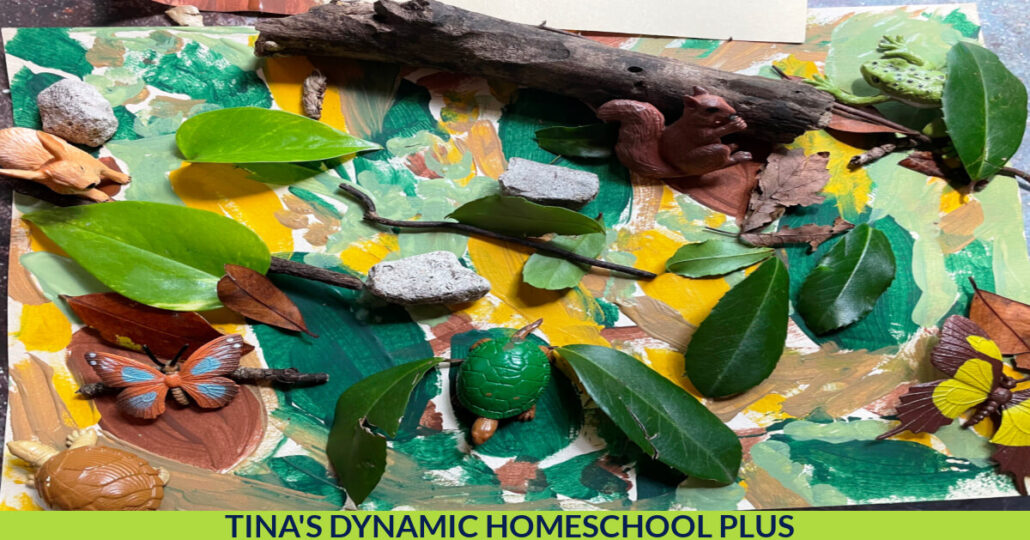
Next, here are a few words to know.
Here are a few words with definitions that may come up in your learning.
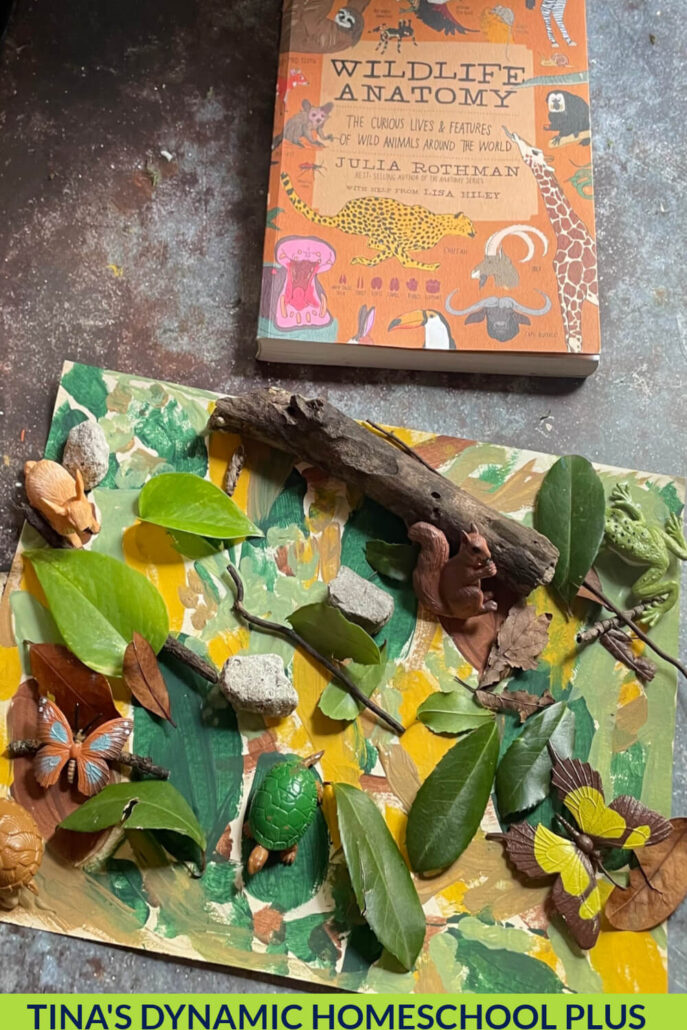
Next, look at some activities to learn about animal camouflage.
Now, I have some excellent books, activities, and video suggestions to help round out your camouflage lesson.
Add some of these animal camouflage activities and resources to your unit study about animals.

NaturalWorld is a great reference to have on hand because it is full of all kinds ofnatural science info and illustrations.
Continue Reading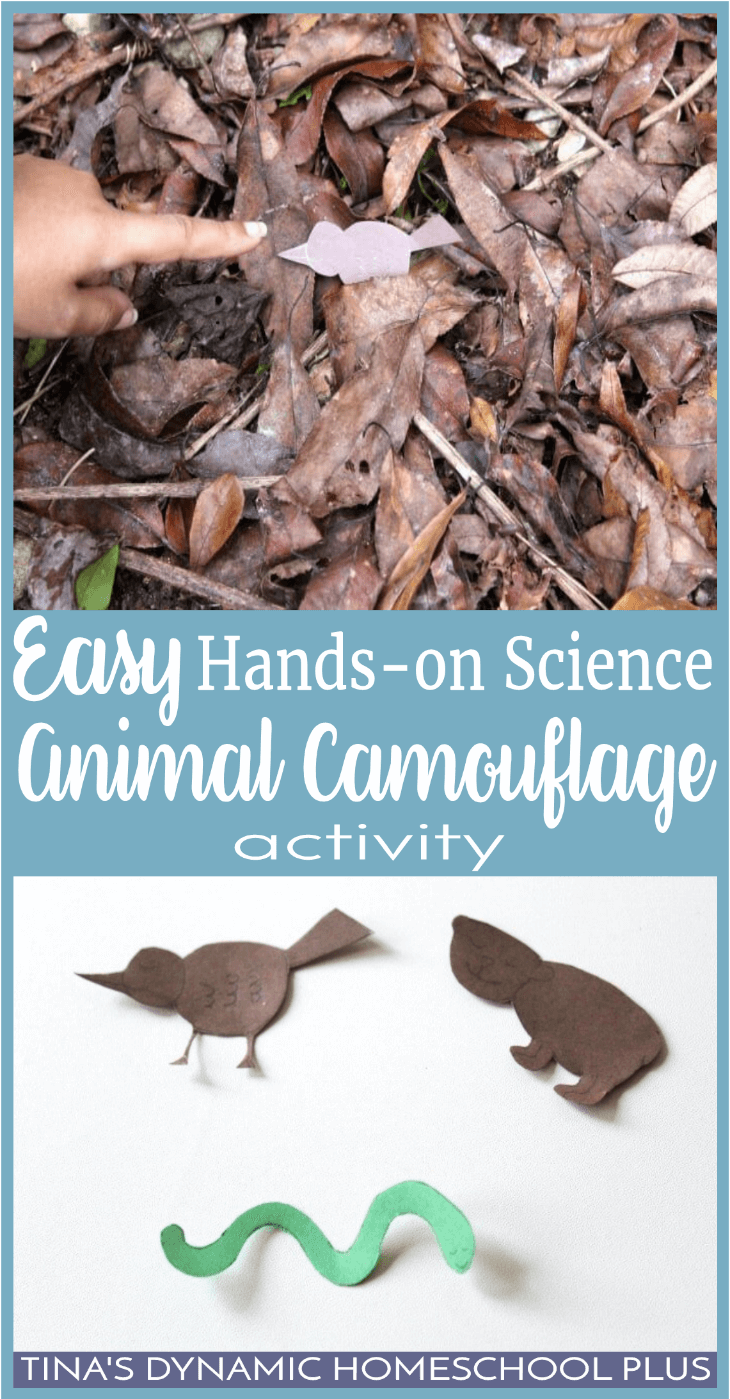
While animals may choose to migrate (leave a cold climate for a warmer one) or hibernate (sleep during the cold weather), many of them also take advantage of camouflage to keep themselves safe from predators during winter. After all, many predators need to fatten up for winter too!
Continue Reading
Some animals defend against predators by fighting toe to toe. Others rely upon armor and other physical defenses.
However, sometimes the best defense of all is to stay out of sight. Readers (Grades 3-5) will learn all about animal camouflage, from species that simply blend into the background to others that mimic more dangerous animals. They will also discover how these species have developed their camouflage over time and how even powerful predators sometimes rely upon this useful ability.
Continue Reading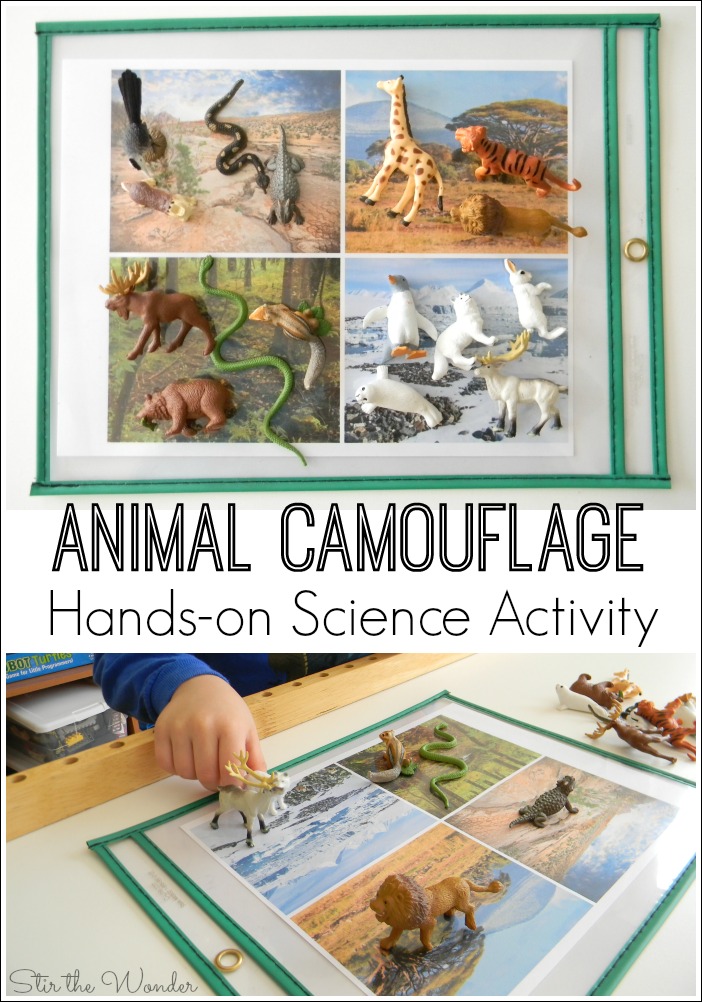
If your kiddos are interested in learning about animals, this Animal Camouflage Hands-on Science Activity will sure to delight!
Continue Reading
Bright, punchy artwork makes every page an adventure in the latest title in the best-selling Shine-A-Light series. A hidden world of snow-covered Arctic foxes, tree-trunk hiding owls, and perfectly camouflaged butterflies will be revealed as you hold the pages to the light.
Continue Reading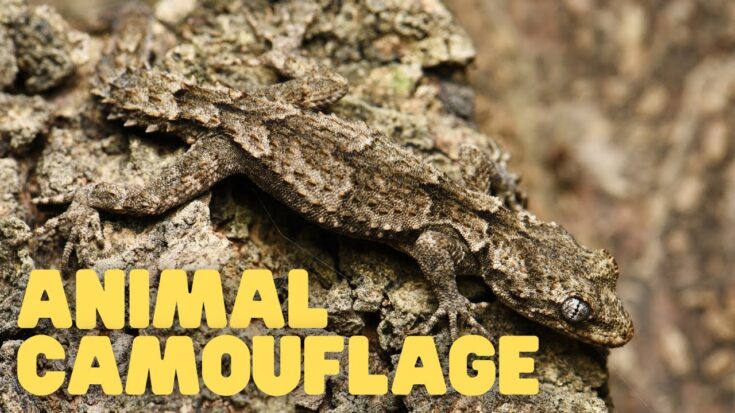
What is camouflage? Why do animals need to use it? Well, in Animal Camouflage, your kids and students will learn the answers to these questions! First off, there are many different kinds of camouflage, and we will discuss four of the main kinds that apply to animals in this video. Did you know that there is actually more than one reason that animals use camouflage?
Continue Reading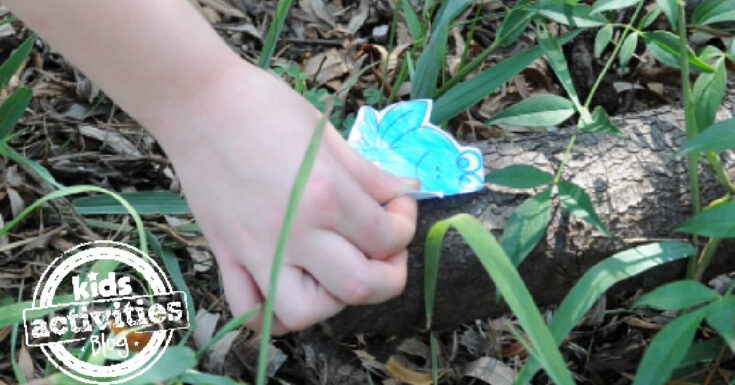
Animal camouflage is nature’s way to protect and hide creatures from predators. Kids love a good scavenger hunt so I created a camouflage frog hunt to help my daughter understand how an animal’s coloring can help him hide in his surroundings and therefore stay safe.
Continue Reading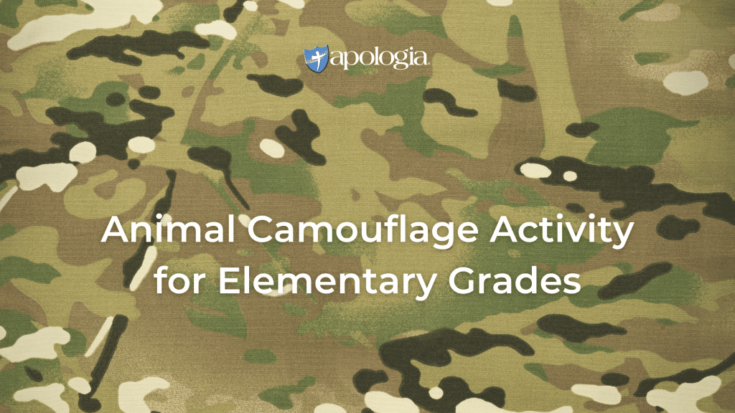
First, we lined the bottom of the laundry basket with some extra sheets of yellow, green, red, and orange construction paper so that the bottom of the stark white basket became part of the animal camouflage.
Continue ReadingFinally, look at this animal camouflage activity.
This activity combines using observation on a nature walk with creating simple camouflage art to better understand how animals use it to hide.

First, take a nature walk and collect leaves of different colors, twigs, pinecones, small pebbles, and whatever you find on the forest floor or even in your own backyard.
See if your child can spot any critters among the leaf litter, on the bark of trees, or up in the foliage.

Bring your nature treasures home and give your child paints in similar colors, have the paint leaves, dirt, twigs, or whatever they saw on their walk.
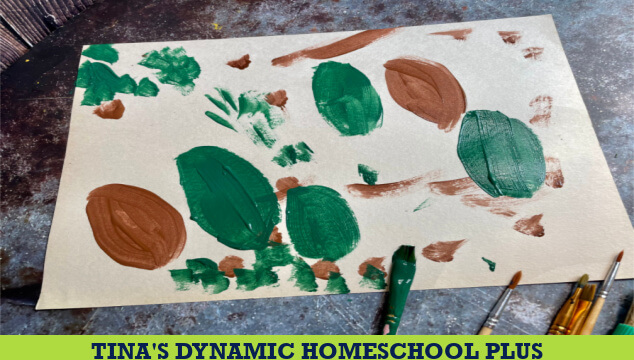
Continue painting until the page is full of different sizes and shades of paint.
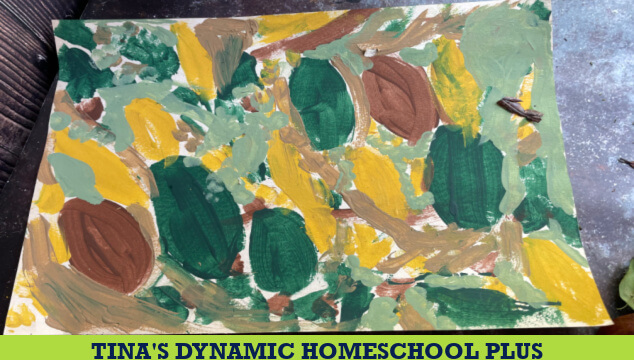
Add found leaves and twigs.
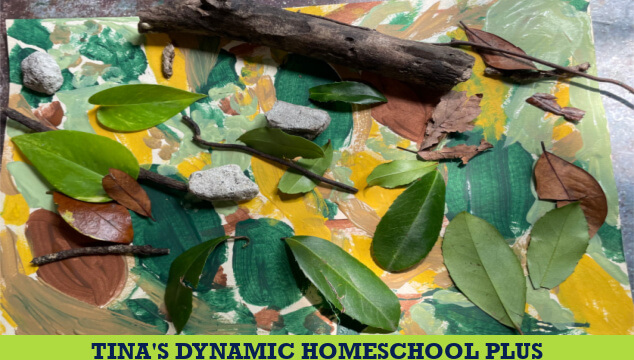
Finally, encourage them to hide plastic animals, printouts, or hand-drawn animals as well as they can, matching them to the colors and patterns as closely as possible.
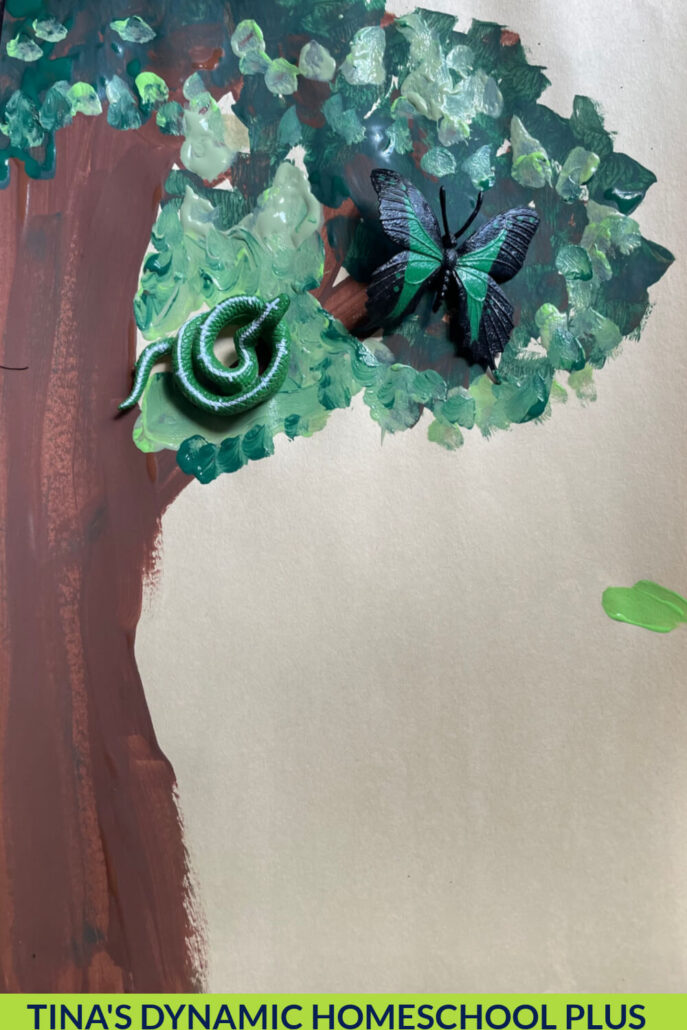
You can also paint a picture of a tree trunk and foliage and hide animals there also.
Compare it to arctic animals on a white background.
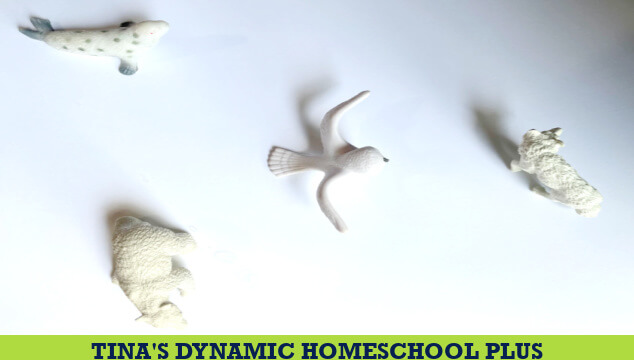
This site uses Akismet to reduce spam. Learn how your comment data is processed.